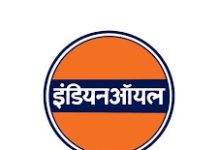Abstract
Detail engineering of mechanical packages (e.g. various compressors, N2 plant, boiler package etc.) has always been a challenge for control systems engineer in terms of getting the proper data in time. If the required data is not available in-time, it will delay the engineering activities and ultimately may impact the project schedule as well.
Hence meeting the required schedule and data, it is very important that the Mechanical packages should be handled very carefully from the beginning i.e. from the basic engineering, as well as detailed engineering stage.
 Identification Of Challenges
Identification Of Challenges
One of the common issues is that ordering of mechanical packages is delayed and is not suitably linked with control systems deliverables, which typically results in further delay in engineering activities. The control systems scope can be considered the most important scope in terms of quality, safety and overall performance of the mechanical package, so proper attention/focus should be at par with other discipline deliverables.
Below are listed some of the Challenges that an instrumentation engineer faces during the detail engineering activities of mechanical packages.
u Project standard Legends, Symbols and Tagging in Piping & Instrumentation Diagram (P & ID)
In many cases, the mechanical package P & ID Legend, symbols and tagging are not aligned with the main plant P & ID. Also, the interface of the mechanical package P & ID is not aligned with the main plant P & ID.
u Input data in Prescribed Format:
Many times it is noticed that the Vendors do not submit data in the format requested by the control systems engineer. This is applicable for following deliverables:
- Input-Output List
- Cause & effect matrix
- Process control narrative
- Safety narrative
- Instrument datasheet
- Instrument Index
- Instrument location plan
- Instrument air supply layout etc.
- Junction box grouping, cable schedule etc.
Focus on Vital data:
When inputs are requested in prescribed formats, they often contain information and details which might not be within the scope of the vendor. The Vendor may not be able to provide all details in the first issue of the document.
u Missing Information
Sometimes the requirements per project specifications are not requested from the vendor and no confirmation is requested. Without confirmation that specification requirements are included in scope, it becomes very difficult for the vendor to comply with the requirements and this may result in implicating price and schedule. Such details may include: - Datasheet in .isf format for Smart Plant Instrumentation (SPI)
- Approved make & preferred model number
- Soft signal exchange list in prescribed format
- Alarm & trip set points
- Software and hardware requirements for Communication with Distributed Control System (DCS)
* Too many comments on Vendor Drawings
It has been observed that extensive comments are given on vendor documents which results in delaying the document approval cycle, as well as delaying the delivery of the package. This is especially true for documents that require manufacturing clearance.
* Junction box and cabling scope are not properly defined.
* Required Information for various utilities within the mechanical vendor battery limit.
* During the finalization of long lead items, instrumentation department is not on-board and hence instrumentation part is kept untouched.
* Sometimes vendor does not approve the deviations which may impact the later stage of the project during detail engineering.
The above mentioned details are applicable for the mechanical packages which are being controlled from Main Plant DCS/Emergency Shutdown (ESD) system as well as the mechanical packages are being controlled from its own dedicated Programmable Logic Control (PLC) based control system.
Possible Solutions to Overcome the Challenges
It then becomes the responsibility of the Control Systems Engineer to get the right data in-time from mechanical package vendor. A few things that can be taken into the consideration while doing the detail engineering of mechanical packages are listed below:
* Basic inputs like the legend, symbols and tagging philosophy need to be provided to the mechanical package vendor right at the bidding stage. Also separate tag series shall either be assigned for mechanical package scope tags or a numbering philosophy document for the particular job shall be followed.
* The main reason that Vendors do not submit data in the prescribed format is because the formats are not shared with vendor during the bid evaluation stage. As a minimum, project standard templates / formats must be submitted during the kick-off meeting.
* The more we ask the vendor to customize the more difficulty we face in acquiring the data to meet our schedule and the more we drive up cost. Although this might be thought to be an acceptable approach on a cost-reimbursable project, to give the Client everything he is asking for, is driving up cost and setting the vendor up (and ourselves) for failure. It is our responsibility to identify where client requirements are driving up project cost. On lump-sum projects, we must familiarize ourselves with the minimum requirements and take exception where we can to project requirements that exceed the minimum necessary to deliver a safe and operable package.
* One of the main reasons vendors struggle to meet schedule for vendor data and ultimately delays shipment of the packaged equipment is the degree of customization placed on the vendor and the number of specifications included in the Request for Quotation (RFQ). Many package vendors do not keep a large staff of engineers available to review or assess the project specifications and to re-design or customize standard drawings during detail design. Often they must contract with a third party to redesign the controls. Fabrication stalls as vendor data is cycled multiple times until the customization is to the satisfaction of the consultant.
* The very first thing a Instrumentation engineer should do is review all project specifications that might impact the packaged system with the intent to eliminate inconsistencies, conflicts, and unclear or non-applicable requirements. Next, work with the client to eliminate gold-plating and excessive customization noting that this will result in savings to the project and reduce schedule. Highlight where design margins are increased, footprint is increased, standard panels are re-designed, fabrication techniques changed, installation details modified and engineering deliverables are added to the vendor’s scope.
* Once the client agrees to the streamlined set of requirements and/or specifications, integrate them into the RFQ technical notes. Ensure the Inspection and test checklist for packaged equipment is included in the set of specifications and the master document register lists the minimum required documents.
* Collaborate with the mechanical responsible engineer to review proposals and clarify proposals. Participate in bid openings, vendor clarification and pre-award meetings. Clarification meetings is the time to request vendor typical drawings and assess if they contain the level of detail needed.
* When assessing a package vendor’s standard design drawings, identify interfaces with other systems (both for control and utilities), scope breaks and how construction will be impacted.
* When practical, let the vendor maintain his method of tagging for devices that are internal (instruments and devices not brought to the plant automation system). This can also be a practical approach to how vendor P&IDs and project P&IDs are integrated. Devices internal to the package system would not be shown on Project P&IDs, which shows the package as a black box. There are several ways to handle devices and signals that connect to the plant control systems or that are supplied as ship-loose for installation. They may be assigned a project tag in addition to the vendor’s tag, a cross-reference list provided by the vendor and vendor drawings updated to reflect both, or the vendor may agree to accommodate the project tagging in all his documentation. The former is the best solution for packages that are supplied as vendor standard packages with Unit Control Panels (e.g. Instrument air compressors, packaged boilers, etc.) and the second for equipment packages that are more complex with multiple skids and wired to the Plant Control System.
* Reviewing equipment package vendor data should be coordinated by an Instrumentation engineer to achieve the following; eliminate or reduce cycling of data, eliminate addition of information onto a document that exists on a different document (e.g. duplication of project tags on all documents where a cross-reference exists), avoid comments that change the vendors design that had not been included in Purchase Order (PO), ensure all instrumentation and electrical reviewers avoid doing a quick scan with the intent of doing a more thorough review on the next cycle and avoiding cosmetic marks that have no impact on the design.
* Prior to Inspection and test of equipment package, the instrumentation engineer and designer should be familiar with the minimum requirements and have confirmation from the vendor that all devices are installed, all controls are completely wired, the vendor has completed an internal test of the equipment and a set of the approved documents are available. The technical notes should contain a statement stating the vendor should return the completed inspection and test checklist with the notice of inspection.
* An equipment package that is fully integrated with the plant automation system will require coordination between the Automation system supplier and the package vendor. During RFQ development of the equipment package, the instrumentation engineer responsible for package should coordinate with the Lead Automation Engineer to ensure all requirements for network(s) connectivity are included and specific to each package. If possible, a block diagram should be provided to the vendor to clarify the scope breaks and connection points. Confirm the package vendor data submittal dates and format align with the Automation System Supplier’s schedule and format for required deliverables. A map of internal addresses (Modbus map), communication protocol(s) and IP addresses is often an area that is not well coordinated and results in re-work for both package vendor and automation system supplier.
Conclusion
Hence to conclude on the subject, early alignment with package vendor is very much essential during the kick-off meeting immediately after the purchase order. All critical issues like formats to be followed, .isf datasheets for SPI, battery limit interface, junction box grouping, control narrative, C & E etc. should be thoroughly discussed and agreed between the agencies.
References
1. ISA, International Society of Automation.
2. Image courtesy by Canadian Government Nuclear Laboratory
3. Intergraph corporation for SPI
Aknowledgements
We would like to thank P.K. Midha, Control System & Electrical Head of Department, Fluor Daniel India Pvt. Ltd. for his continuous support and motivation in completion of this paper.
We would also like to thank Leo Poszywak Subject matter expert – Control System, Fluor enterprises for his valuable inputs and support in completion of this paper.
We would also like to thank Fluor New Delhi senior management for encouraging us to pursue writing of this paper.
































